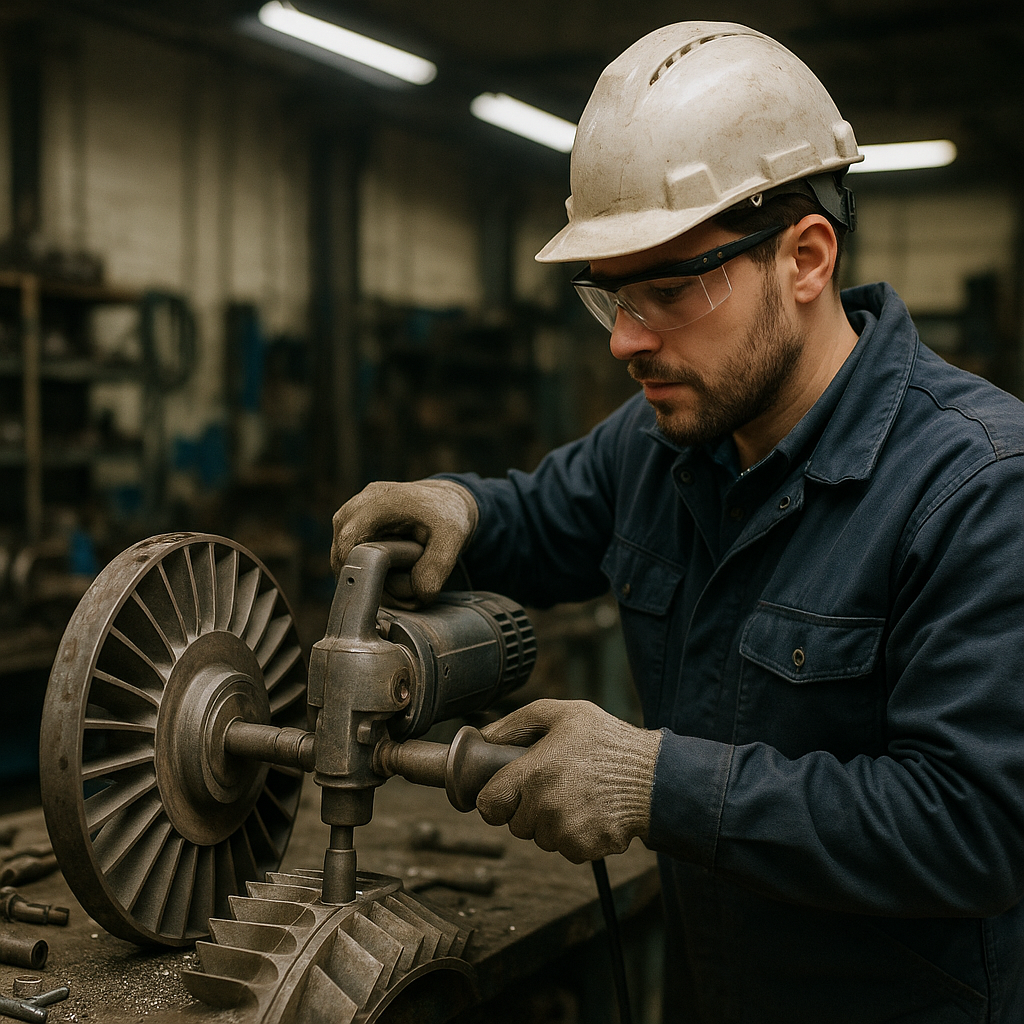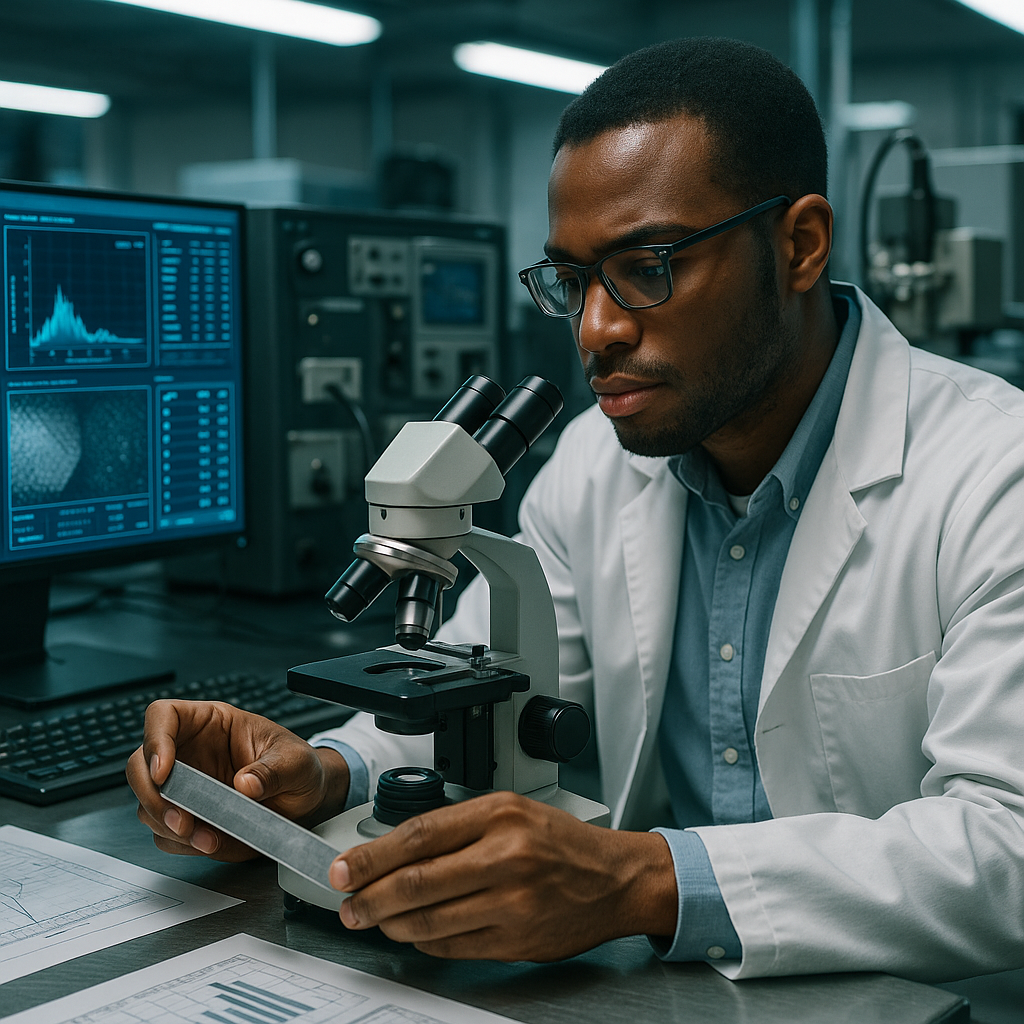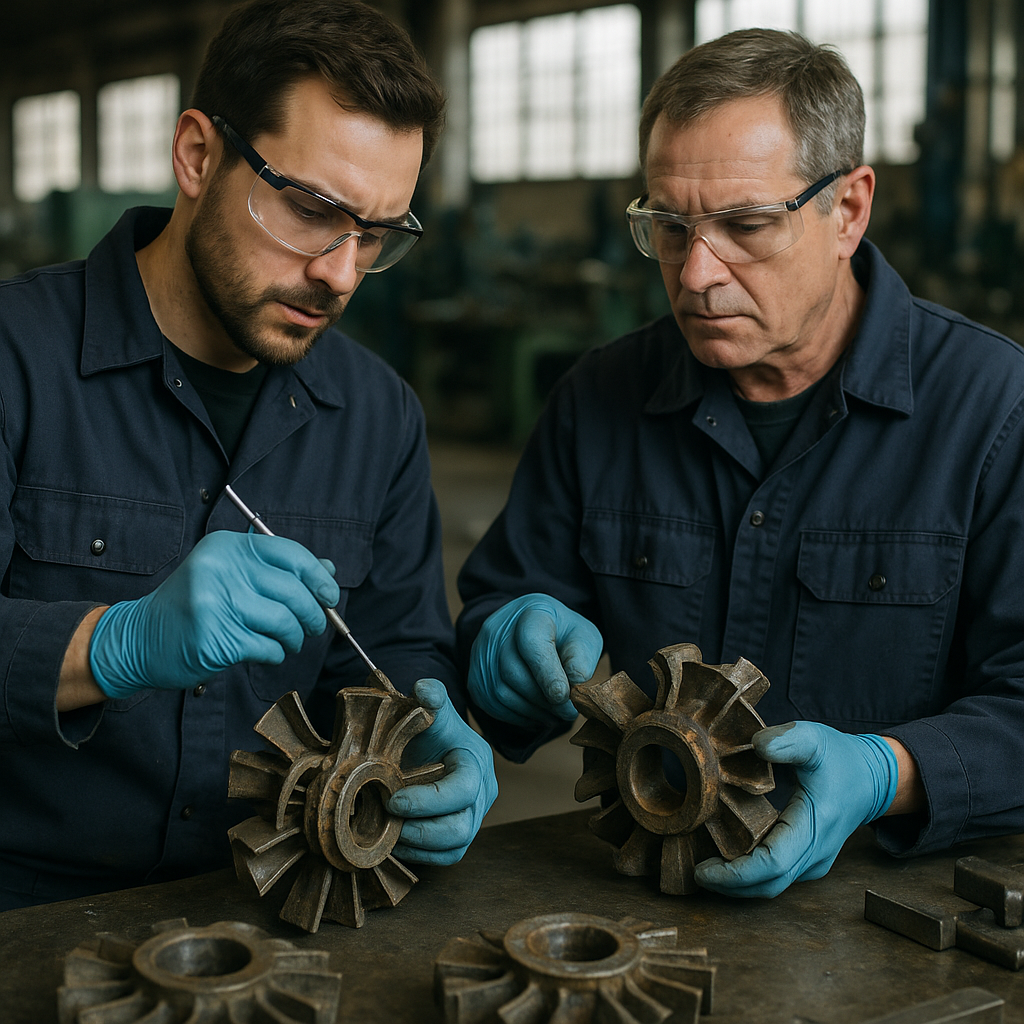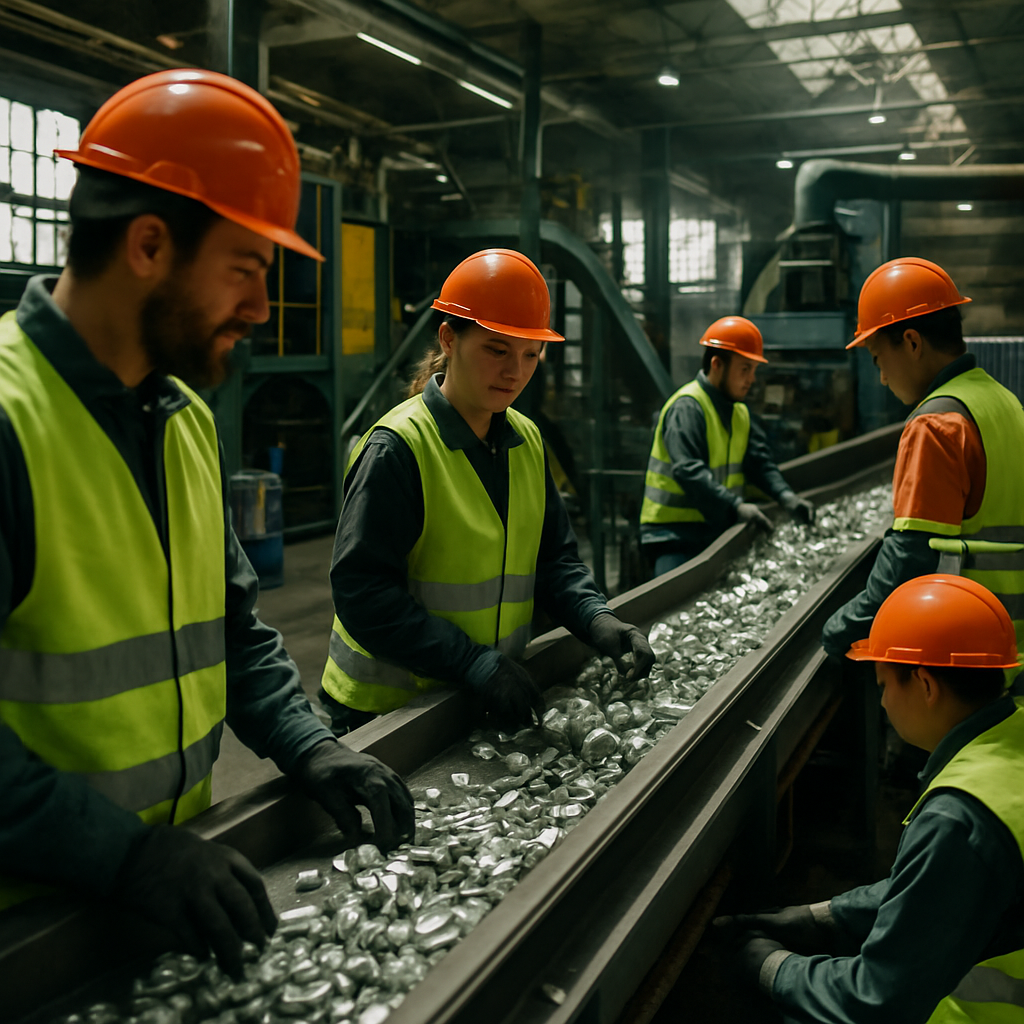5901 Botham Jean Blvd, Dallas, TX 75215
Cobalt Recovery from Superalloys: A Guide to Methods, Innovations & Challenges
October 22, 2025Cobalt is a critical metal in today’s industrial landscape, particularly in the aerospace sector. Widely used in superalloys, cobalt offers exceptional high-temperature strength, durability, and corrosion resistance. The aerospace industry relies on cobalt-containing superalloys to manufacture turbine blades, gas turbines, and other components designed to withstand extreme conditions.
The strategic importance of recovering cobalt from superalloys is significant. As global cobalt demand approaches 200 kilotonnes annually and is expected to double by 2030, recycling this valuable metal has become crucial. Economically, cobalt prices have fluctuated between $30,000-$50,000 per tonne in recent years. Moreover, over 76% of global cobalt mining occurs in the Democratic Republic of Congo, posing significant supply risks due to geopolitical instability and ethical sourcing concerns.
Superalloys are a valuable source for cobalt recovery, containing between 5-70% cobalt, and are used in applications where material failure is not an option. The superalloy industry produces substantial manufacturing scrap and end-of-life components with significant cobalt value. Developing effective recovery methods to reclaim cobalt and other valuable alloying elements from this waste stream offers economic and environmental benefits while reducing dependence on primary mining sources.
What are the main methods for recovering cobalt from superalloys?

The recycling and recovery of cobalt from superalloy scrap involve two primary approaches: pyrometallurgical and hydrometallurgical processes. Each method offers distinct advantages and challenges in extracting this valuable critical metal from complex alloy compositions.
Pyrometallurgical Recovery Methods
Pyrometallurgical techniques rely on high-temperature processes to separate and recover valuable metals from superalloy scrap. Electric arc remelting is one of the most common methods in this category, capable of producing metal ingots with purity levels exceeding 93%.
The process typically involves three key steps. First, the superalloy scrap undergoes roasting to transform compounds into more processable forms. This is followed by smelting in furnaces at temperatures between 1200°C and 1600°C. Finally, refining processes sort metals by exploiting their chemical and metallurgical properties.
- Advantages: Well-established commercial technology, faster processing times, ability to handle mixed and contaminated scrap inputs
- Disadvantages: High energy consumption (361 tons of direct CO2 emissions per kg/ton of metal), significant material losses, limited selectivity for individual metals, inability to recover lithium, aluminum, and manganese from the slag
Hydrometallurgical Recovery Methods
Hydrometallurgical processes offer an alternative approach using water-based chemistry to recover cobalt from superalloys. These methods dissolve metals as salts through successive water-based steps, typically employing acid leaching with reagents like sulfuric acid, often enhanced with hydrogen peroxide.
The hydrometallurgical route involves three primary stages. Initially, leaching brings aqueous solutions into contact with the material, dissolving the metals of interest. This is followed by solution-based concentration and purification. The final step involves metal recovery through selective precipitation or electrowinning.
- Advantages: Higher selectivity for individual metals, lower energy consumption, significantly lower greenhouse gas emissions, ability to recover lithium, aluminum, and manganese
- Disadvantages: Longer processing times, still under development for full commercial-scale implementation, potential challenges with complex superalloy compositions
Research comparing these approaches has shown hydrometallurgy to be more environmentally friendly. While pyrometallurgical methods produce substantial CO2 emissions from combustion processes, hydrometallurgical techniques have demonstrated minimal environmental impact under similar testing conditions.
For superalloys specifically, both methods face challenges with certain elements. Many superalloys contain significant quantities of chromium, titanium, and aluminum, which can form stable oxides that resist conventional leaching. Additionally, the presence of refractory elements like tungsten and rhenium can complicate recovery efforts.
As battery metal demand increases, innovative combinations of these approaches are emerging. Some promising developments include carbothermic reduction followed by leaching, which has shown potential for converting difficult-to-process oxides into more readily recoverable forms.
What recent innovations are improving cobalt recovery from superalloys?

The recycling landscape for superalloys is undergoing significant transformation due to various innovative recovery methods. Electrochemical leaching has emerged as a promising technique for extracting valuable metals from superalloy waste. This approach uses electrical currents to continuously regenerate oxidizing agents that facilitate metal extraction under milder conditions than traditional methods.
Recent research at Idaho National Laboratory highlights the effectiveness of electrochemically assisted leaching for cobalt recovery. Scientists discovered that using electrochemically generated ferric iron (Fe³⁺) as an oxidizing agent allows them to extract up to 73% of cobalt from cobaltite-rich concentrates within 24 hours. This process operates at moderate temperatures and ambient pressure, eliminating the need for high-pressure vessels or extreme heat.
The primary advantage of electrochemical leaching is its ability to drive chemical reactions using electrons rather than chemical reagents, reducing the environmental footprint compared to traditional hydrometallurgical approaches that rely on large quantities of oxidizing agents. When powered by renewable energy sources, electrochemical processes can significantly reduce the carbon footprint of metal recovery operations.
Combined pyro-hydrometallurgical processes represent another major innovation in superalloy recycling. These hybrid methods leverage the strengths of both thermal and solution-based extraction techniques. Typically, the process begins with high-temperature decomposition of the superalloy in a salt melt, breaking down the complex material structure, followed by leaching to extract valuable elements like cobalt, nickel, and rhenium.
One notable development in this area involves using molten salt media for superalloy decomposition. The process generally involves crushing superalloys into powders, followed by treatment in an alkali salt melt at elevated temperatures. The resulting materials become more suitable for subsequent acid leaching, which recovers valuable metals, including cobalt, nickel, and refractory metals. This approach has demonstrated superior metal recovery rates while consuming less energy than conventional pyrometallurgical methods.
Multi-stage leaching processes are also gaining attention for their ability to selectively recover different metals from complex superalloy waste. For example, a two-stage leaching process using hydrochloric acid solutions has shown promise for nickel and rhenium recovery. The process can be tailored to target specific metals based on their electrochemical properties, allowing for more efficient separation of cobalt from other components.
Optimizing these processes requires precise control of multiple variables. For electrochemical leaching, factors like current density, solution acidity, and oxidant concentration significantly impact recovery rates. Recent studies using Box-Behnken experimental design and response surface methodology have helped identify optimal conditions for maximum cobalt extraction while minimizing energy consumption and waste generation.
These innovations represent a shift toward more sustainable and economically viable methods for recovering critical metals from superalloys. As global demand for cobalt continues to rise—driven by the growth in electric vehicle production and renewable energy storage—these advanced recycling technologies will play an increasingly important role in securing stable supply chains for these essential materials.
What are the key challenges in cobalt recovery from superalloys?

Recovering cobalt from superalloys presents significant technical challenges, affecting both efficiency and economic viability. The properties that make superalloys valuable in high-performance applications also create substantial recycling challenges due to their resistance to breakdown.
Complex Alloy Composition
Modern superalloys often contain more than a dozen elements, intricately formulated to achieve specific mechanical and thermal properties. This complexity makes selective cobalt recovery particularly difficult, as the metallurgical bonds are challenging to break without compromising the recovered material’s value.
For instance, nickel-based superalloys typically contain 5-20% cobalt along with elements like chromium, aluminum, titanium, tantalum, and rhenium, necessitating advanced separation techniques beyond basic smelting or dissolution.
Refractory Metal Interference
Refractory metals such as tungsten and molybdenum complicate cobalt recovery due to their high melting points and chemical stability, making them resistant to conventional separation processes. They pose separation challenges in both pyrometallurgical and hydrometallurgical recovery methods.
Research indicates that compounds of tungsten and tantalum can form stable oxides (WO3 and Ta2O5) during leaching, which remain in residues and trap valuable cobalt, reducing recovery rates.
Passivation Layer Formation
A key barrier to effective cobalt recovery is the formation of passivation layers during leaching. Elements like aluminum and chromium create protective oxide layers on the superalloy surface, acting as barriers to further metal dissolution.
Studies show that during conventional leaching, chromium and aluminum enrichment at the surface creates a barrier that significantly slows or halts the process, potentially reducing cobalt recovery rates by 20% or more.
Material Downgrading
Current recycling methods often result in downgrading cobalt-bearing materials. Instead of recovering cobalt for reuse in high-value applications, it frequently ends up in lower-value alloys, reflecting a significant economic and resource loss.
Industry studies report that over 2.7 million pounds of cobalt in downgraded superalloy scrap are lost annually to lower-value applications, partly because some end-use specifications require virgin cobalt, directing recyclers to less demanding applications.
Technical Limitations of Current Processes
Traditional pyrometallurgical recovery methods require significant energy and can result in up to 20% loss of rare metals, including cobalt. Hydrometallurgical approaches, while more selective, face challenges with waste acid management and incomplete metal dissolution.
Recent innovations, like ultrasonic-assisted leaching, show promise in improving cobalt recovery rates by breaking down passivation layers through cavitation effects, increasing extraction efficiency by about 20% compared to conventional methods.
Addressing these challenges requires innovation in selective separation technologies, better leaching techniques, and environmentally sustainable recovery processes to handle the complex composition of modern superalloys.
Conclusion: The Future of Cobalt Recovery from Superalloys

As demand for cobalt continues to grow, particularly for electric vehicle batteries and other high-tech applications, efficient recycling of superalloys will become increasingly important to global supply chains. The strategic value of cobalt is significant, especially as industries advance toward electrification and renewable energy technologies. Current recycling rates are not yet optimal, with considerable amounts of valuable cobalt still lost due to inefficient processing methods.
Research into improved hydrometallurgical techniques and combined pyro-hydrometallurgical processes shows promise for more effective and selective cobalt recovery. These technological advances aim to address existing challenges, like high energy consumption and element loss during processing. By developing more efficient recycling pathways, we can create a more sustainable cobalt supply chain and reduce the environmental impacts associated with primary mining. Contact Okon Recycling at 214-717-4083 for all your recycling needs, including superalloy recycling solutions that help recover valuable metals like cobalt efficiently.
